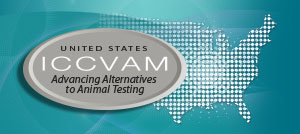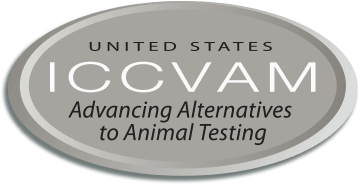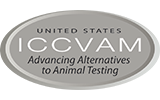Reducing or eliminating animal testing is a key goal of the 2018 ICCVAM Strategic Roadmap. To this end, ICCVAM agencies that conduct chemical safety testing develop and use approaches that reduce or replace animal use. Likewise, ICCVAM agencies that require their stakeholders to conduct testing are reducing required animal use by developing criteria for waiving tests.
Initiatives to Replace or Reduce Animal Use
EPA New Approach Methods Work Plan
In June 2020, EPA released its New Approach Methods Work Plan, which was created in response to the EPA Administrator’s 2019 directive to prioritize activities that will reduce the use of animal testing while continuing to protect human health and the environment. The work plan was developed by experts across the agency to set the objectives and strategies for using new approach methods to meet the ambitious goals set out in the Administrator's directive.
An update of the work plan was released in December 2021. The updated work plan addresses recommendations made by the ICCVAM Metrics Workgroup in its report, “Measuring U.S. Federal Agency Progress Toward Implementation of Alternative Methods in Toxicity Testing.” In its updated work plan, EPA commits to reporting summary metrics on reducing vertebrate animal testing and use annually on its website beginning in the fourth quarter of 2022.
EPA Guidance for Waiving of Toxicity Tests on Animal Skin
In December 2020, EPA published final guidance that will allow researchers to forego testing chemicals for acute systemic toxicity on animal skin in certain circumstances. The “Final Guidance for Waiving Acute Dermal Toxicity Tests for Pesticide Technical Chemicals and Supporting Retrospective Analysis” allows for data waivers for acute dermal systemic toxicity studies for single active ingredients used to develop end-use products other than fumigants and rodenticides. The document includes a policy statement to waive all acute lethality dermal studies for single active ingredients in many cases.
This guidance supports EPA efforts to identify opportunities for test waivers that can reduce animal use for testing required for pesticide registration. It was based on a retrospective analysis conducted by EPA and collaborators, which concluded that such studies provide little to no added value in regulatory decision-making when an acute oral toxicity study has been conducted. This guidance is expected to save up to 750 test animals annually from unnecessary testing, as well as EPA, industry, and laboratory resources.
Retrospective Analysis of Triple Pack Studies for Dermal Absorption
Substances can cause acute systemic toxicity when absorbed through the skin. Dermal systemic toxicity is in turn driven by the ability of a substance to penetrate the skin. Dermal absorption can be estimated using the “triple pack,” a study design that combines in vivo rat, in vitro rat, and in vitro human data to calculate an estimated human dermal absorption factor.
To assess the feasibility of deriving a dermal absorption factor using only in vitro data, NICEATM and EPA conducted a retrospective evaluation of agrochemical formulations to compare the dermal absorption factors derived from each method (Allen et al. 2021). The dermal absorption factor derived from the human in vitro study was also compared to the dermal absorption factor generated from the triple pack approach. Absorption through in vitro human skin was found to be similar to or less than that observed in rat skin for all formulations. For most of the formulations evaluated:
- The in vitro rat method generated a similar or higher dermal absorption factor value than the in vivo method.
- The human in vitro method provided a similar or higher estimate of dermal absorption than the triple pack approach.
This analysis supports potentially using in vitro data alone for dermal absorption factor derivation for human health risk assessment of pesticides. While it is preferable to use data from human skin for human health risk assessments, human in vitro data are not always available. The analysis also demonstrated that estimates of dermal absorption based on in vitro rat data are at least as protective as in vivo rat data, and thus could also be considered adequate for use in establishing dermal absorption factors.
Replacement of In Vivo Leptospirosis Vaccine Potency Testing in the United States
A 2012 workshop co-organized by NIEHS, USDA, and partner organizations sought to develop an international strategy to replace the use of animals in tests required during the assessment of veterinary leptospirosis vaccines (Johnson et al. 2013). Workshop participants gave special attention to the barriers remaining to replace the in vivo vaccine potency test in hamsters. At the time of the workshop, in vitro methods were not widely used as replacements for the in vivo potency test, but advances in both technology and regulatory arenas have since increased their acceptance and use. NIEHS and USDA scientists prepared a review of recent progress (Rogers et al. 2022) to reduce the use of hamsters in leptospirosis vaccine batch potency testing, as well as obstacles remaining to completely replace the use of hamsters with accepted in vitro methods.
EPA Evaluation of Avian Toxicity Tests for Pesticide Registration
In a February 2020 news release, EPA announced that it had finalized guidance to reduce testing of pesticides on birds when registering conventional outdoor pesticides. The guidance describes the results and implications of a retrospective study conducted by EPA and People for the Ethical Treatment of Animals (Hilton et al. 2019). The study explored the quantitative and qualitative contributions of risk assessment methods using single oral dose and subacute dietary toxicity endpoints to the overall conclusions of acute avian risk. The analysis indicated that, in most cases, the subacute dietary results had little impact on risk conclusions based on the use of acute oral data alone. This finding is expected to reduce the number of animals tested by a total of 60 birds per test, for a total projected animal savings of over 700 animals per year based on a typical number of new chemicals registered.



